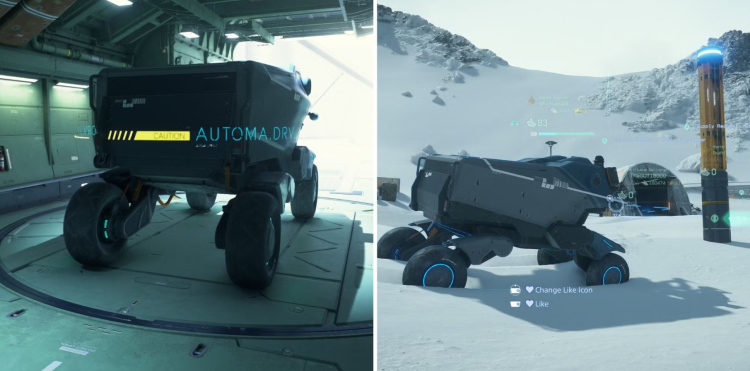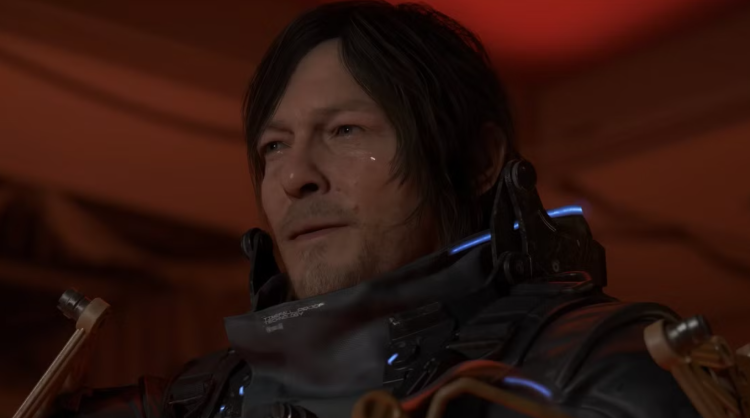Kojima's Latest Interview: How Tech Upgrades and Remote Work Changed Death Stranding 2
Death Stranding 2’s release came later than initially planned, largely due to the pandemic, but Hideo Kojima has revealed that massive technological advancements also played a crucial role in reshaping the game. In his latest interview, Kojima detailed how improved facial capture tech allowed him to cut scripted lines, relying on actors' subtle expressions to tell the story. He also shared the struggles and breakthroughs of directing a complex performance-capture shoot remotely from Tokyo during the pandemic. The game underwent substantial rewrites and technical shifts, resulting in a final product very different from its original vision.
Earlier, we’ve reported, fans are frustrated by cluttered landscapes in Death Stranding 2, where player structures disrupt the game’s solitary atmosphere. The increased shared elements create visual chaos that clashes with the photorealistic world. Players want better filters to reduce clutter without losing the cooperative spirit.
According to an IndieWire interview, Kojima Productions’ leader explained that the facial capture rigs used in Death Stranding 2 advanced so much that they spent about two years just learning the technology. The new systems captured very subtle facial expressions, which allowed Kojima to remove some voice lines to let the actors’ emotions do more of the storytelling. “I kind of even changed the scenes where I’d take out some lines because facial expressions could be covered, and I kind of make that decision on the spot,” Kojima said.

This approach reflects Kojima’s evolving style, where less is more in cutscenes and the rhythm of the game is carefully balanced. He described the sequel as more minimalistic compared to the first game’s lengthy cutscenes, which often caused players to disengage. The improved facial capture and lighting technology contributed to a more natural and immersive experience that didn’t require heavy dialogue to get the emotional point across.
The pandemic forced Kojima to direct many of these sessions remotely from Tokyo while the actors were on set in Los Angeles. Sony’s travel restrictions meant he had to adapt quickly to a new way of working using multiple cameras, smartphones, Zoom, and iPads to communicate. The initial attempts were “disastrous,” with Kojima struggling to understand the spatial setup and direct actors’ movements effectively without being physically present. He couldn’t easily explain to actors where to move on the virtual stage, a challenge that was “impossible” at first.

Kojima eventually found a solution with a system called “Mado” (“Window” in English) at Sony headquarters. This setup involved two giant synchronized screens—one in Tokyo and one in L.A.—that allowed real-time two-way video and audio communication. It let Kojima see life-sized actors through the screen and direct them as if he were standing just outside their window. This breakthrough helped overcome the major hurdles of remote directing during lockdowns.
The pandemic also influenced the story of Death Stranding 2. Kojima revealed that while the first half remained close to the original concept, the latter half, especially the ending, was heavily rewritten during this period. New lines spoken by characters like the President and Die-Hardman reflect Kojima’s thoughts and experiences throughout the pandemic. Despite these changes, Kojima prefers to keep the original concept sheet private, believing that sharing too much about the creative process would detract from the art itself.
Kojima also talked about the unique challenges of merging cinematic storytelling with interactive gameplay. Unlike film, where creators control exactly what the audience sees and hears in sequence, games allow players to skip scenes or explore the world at their own pace. This makes directing both the actors and the players unpredictable. The long, drawn-out filming schedule for games, with shoots spread out over months or years, adds to the difficulty, especially when actors must recall emotional tones from previous sessions.
One standout example of Kojima’s adaptability was adding new scenes after motion capture sessions. He described how a smoking scene for Léa Seydoux’s character was not originally planned but was added during production as they realized the potential of the new facial tech to convey nuance. The team also invested significant time learning about professional lighting, which further enhanced the game’s visual fidelity.
Kojima is also working on new projects, including a horror game co-written with Jordan Peele and a stealth action game rumored to star Robert Pattinson. Yet, even weeks after Death Stranding 2’s launch, he remains deeply involved in monitoring player data, fixing bugs, and planning updates, proving that a video game’s life extends far beyond release.

Read also our list of the ten weirdest Easter eggs in Death Stranding 2, which might be fun or very absurd, but we love it!
In sum, Kojima’s latest interview reveals that Death Stranding 2’s final form owes as much to cutting-edge technology and pandemic-driven adaptation as it does to his visionary storytelling. The result is a game that pushes the boundaries of cinematic interactivity, guided by a director who embraced change and remote innovation to deliver a new kind of experience.

Comments